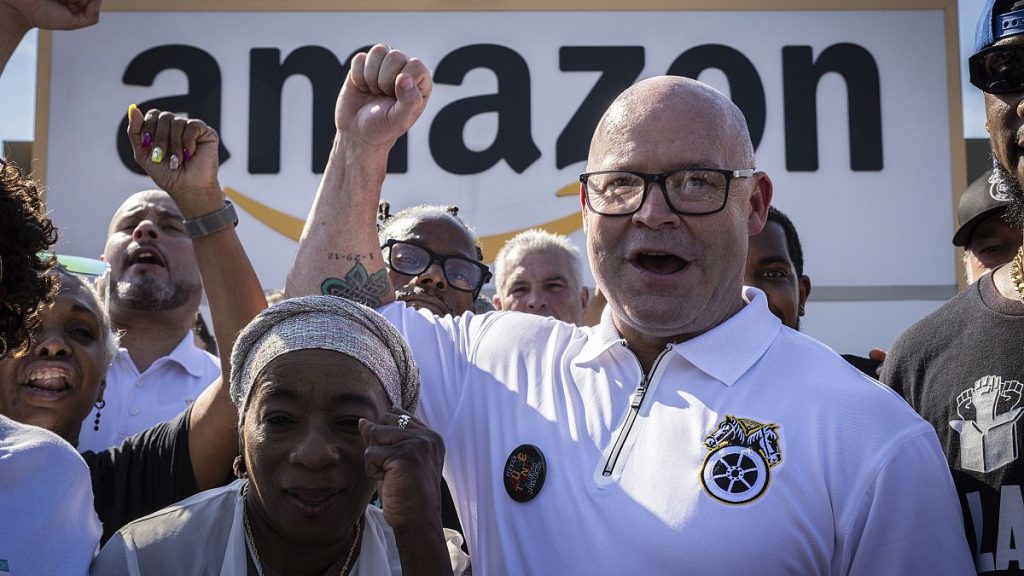The International Brotherhood of Teamsters initiated a strike against Amazon on Thursday, December 21, 2023, targeting seven of the e-commerce giant’s facilities across the United States. This action, occurring during a critical holiday shopping period, represents the largest strike against Amazon in US history and underscores the escalating tension between the company and its workforce seeking union representation. The Teamsters allege that Amazon failed to meet a December 15th deadline for contract negotiations, prompting the walkout. While the union asserts its representation of nearly 10,000 Amazon workers across ten facilities, this remains a small fraction of Amazon’s 1.5 million-strong workforce. The strike locations include one warehouse in San Francisco and six delivery stations spread across Southern California, New York City, Atlanta, and Skokie, Illinois. The Teamsters claim that workers at other facilities stand ready to join the strike, signaling a potential for the movement to expand.
The core issue fueling the strike is the Teamsters’ push for a labor agreement with Amazon, a demand the company has thus far resisted. This resistance reflects a broader trend in the tech industry, where companies often face challenges in navigating organized labor movements. Amazon maintains that the strike will not disrupt its operations, a claim that clashes with the union’s assertion of significant worker participation. The striking workers comprise a mix of warehouse employees and delivery drivers. Notably, thousands of the striking workers from the Staten Island warehouse previously voted to join the Amazon Labor Union in 2022 and have subsequently affiliated with the Teamsters. Other facilities involved in the strike have seen workers unionize through demonstrations of majority support, bypassing formal government-administered elections. This tactic highlights the diverse approaches being utilized in the ongoing effort to unionize Amazon’s workforce.
The Teamsters’ General President, Sean M. O’Brien, has accused Amazon of disrespecting its workers and driving them towards the picket line, characterizing the company’s stance as a catalyst for the strike action. This highlights the union’s perspective that Amazon’s unwillingness to negotiate fairly has forced workers to resort to a strike to have their voices heard. Meanwhile, Amazon is contesting the union victory at the Staten Island warehouse, seeking to re-do the election and even filing a lawsuit challenging the constitutionality of the National Labour Relations Board (NLRB). This legal maneuvering by Amazon represents a significant challenge to the legitimacy of the unionization efforts and underscores the complex legal landscape surrounding labor relations in the United States.
A key point of contention centers around the classification of Amazon’s delivery drivers. Amazon argues that these drivers are not direct employees but rather work for third-party businesses known as Delivery Service Partners (DSPs). This classification is crucial as it impacts the drivers’ eligibility for benefits and protections afforded to direct employees. The Teamsters, however, contend that Amazon exerts substantial control over the drivers’ work, effectively making them Amazon employees despite the contractual arrangement with DSPs. This disagreement over worker classification is a central element of the dispute and has broader implications for the gig economy as a whole, where similar debates about worker classification are increasingly common.
Amazon spokesperson Kelly Nantel accuses the Teamsters of misleading the public about its representation of Amazon employees and drivers. Nantel asserts that the union significantly overstates its influence within Amazon’s workforce, dismissing the strike as an attempt to propagate a false narrative. This stark contrast in messaging highlights the deep divide between the two sides and the challenges in finding common ground. The Teamsters’ counterargument emphasizes Amazon’s comprehensive control over the drivers’ schedules, routes, and working conditions, effectively rendering them employees in all but name. This argument aligns with the perspective of some US labor regulators who have sided with the union in filings before the NLRB.
The timing of the strike, coinciding with the peak holiday shopping season, amplifies its potential impact on Amazon’s operations. While Amazon downplays the potential disruption, the strike represents a significant escalation in the ongoing labor dispute. In September, amidst mounting pressure, Amazon increased the pay for its delivery drivers. This move, while potentially aimed at mitigating driver discontent, has not appeased the Teamsters, who continue to press for a formal labor agreement. The outcome of this strike could significantly impact the future of labor relations within Amazon and potentially influence similar movements within the broader logistics and e-commerce sectors. The key issues of worker classification, union representation, and fair labor practices remain at the forefront of this ongoing struggle, and the resolution of this strike could have far-reaching implications for the future of work in the United States.














